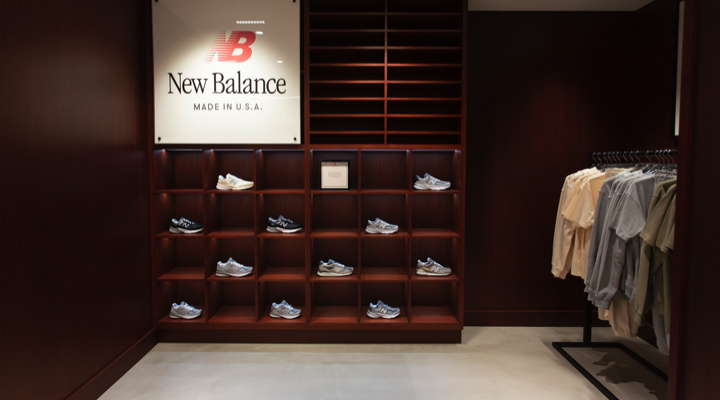In the fiercely contested and competitive footwear and apparel space, New Balance is one of the fastest-growing global sports brands, with the organisation attracting and engaging the next generation of customers. According to Jonathan Clark, New Balance’s Asia-Pacific direct to consumer director, the company has achieved annual growth of about 20 to 30 percent, and has crafted a brand message that resonates with its audience – which is predominately 16-34 years old, and that emphasises
es style, activity, and social equality.
New Balance is also expanding in Australia, this month opening a new concept store in Bondi Junction, Sydney. The company has also established new headquarters in Melbourne, as part of a strategic initiative to recruit talent and facilitate a more collaborative working environment.
Clark told Inside Retail that New Balance has positioned itself at the intersection of sports and culture, with relevant partnerships being critical to this.
“We’ve found that [our audience] is largely concerned about equity, diversity and mental health, and I think New Balance is an authentic brand that [mirrors] these values,” he said.
“As a privately-owned and global sports brand, we can put people before profit. Our values reflect the values of the audience we’re trying to connect with.”
This, he said, is in part due to the work done by the business’s charity, the New Balance Foundation, which has donated over $100 million to support healthy lifestyles in disadvantaged communities since its inception in 1981.
Communal experience
Clark believes that the Bondi concept store stands out compared to competitor stores operating in a similar space.
Rather than maximising the number of items that it can fit into the new store, the brand has strategically reduced product density, and has instead prioritised open areas and featured products.
This, Clark explained, invites a more pleasant consumer experience, where people can develop a stronger understanding as to what New Balance stands for.
New Balance has also opted not to include digital screens in store. This, Clark explained, came about after the brand spoke with over 5,000 customers, who expressed fatigue with the saturation of this in-store technology.
“The new store is anchored on providing a communal experience,” he said.
“There’s a large circular area in the middle of the store with opposite seating. The intent is for customers to feel comfortable spending time [without making a transaction].
“We’ve tried to create a more decompressed and relaxed atmosphere by reducing product density and creating more space. This hopefully enables customers to engage and connect with the brand.”
New Balance plans to open 18 concept stores throughout Australia over a three-year period, and introduce a pinnacle “grey store.”
The latter store format will feature exclusive and premium lifestyle products. The number of these locations will be limited – with one location per country where it’s introduced – and will feature products that aren’t available for purchase anywhere else.
Clark stressed New Balance has placed significant investment in relevant systems and infrastructure, which are designed to deliver a more unified consumer experience across different channels.
He said that Australia has long been a mature and profitable market, with a store rollout necessary to support its e-commerce and omnichannel presence.
“You can’t deliver an integrated experience without a meaningful fleet of stores to support it. The [concept stores] are a manifestation of that global commitment,” he said.
“Hopefully we’ll also be able to land that personalised experience in store, because we’ll understand your interactions with us.”
Elevated experience
In terms of how Australia compares to other markets, Clark pointed out that the “world is becoming smaller,” with local and global trends often aligning.
However, he noted that there are still nuances, with consumers styling and wearing clothes in different ways across different regions.
Regarding the brand’s domestic expansion, Clark said that the goal isn’t saturation. Rather, the aim is to create an elevated experience within the stores that are earmarked for development.
He noted that its growth will continue to be supported by product innovation, collaboration and connecting with the values of its consumers.
“We’ll continue to be at the intersection of sport, style and culture,” he said.

